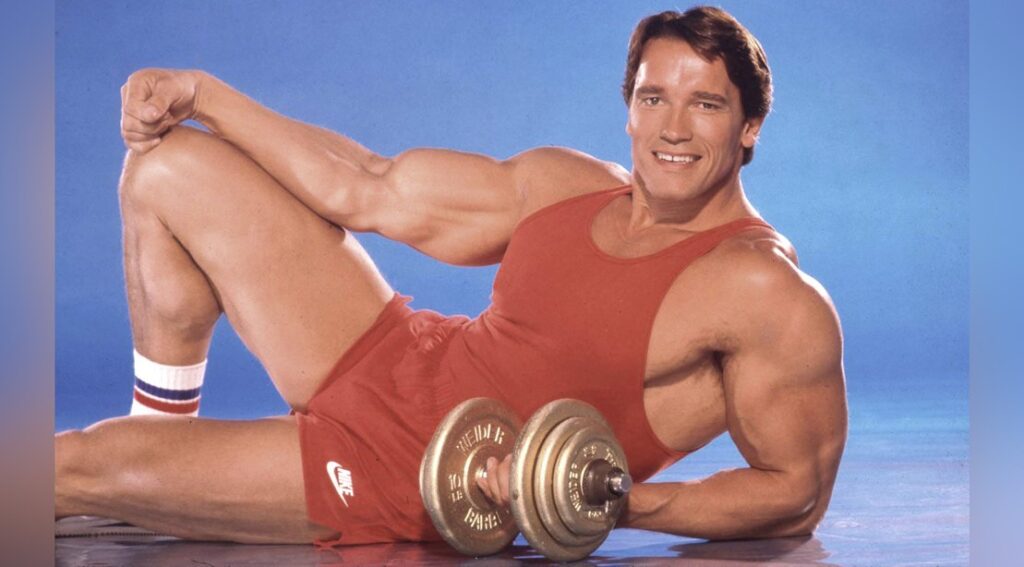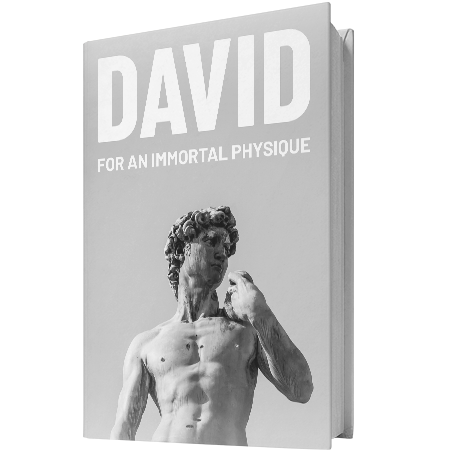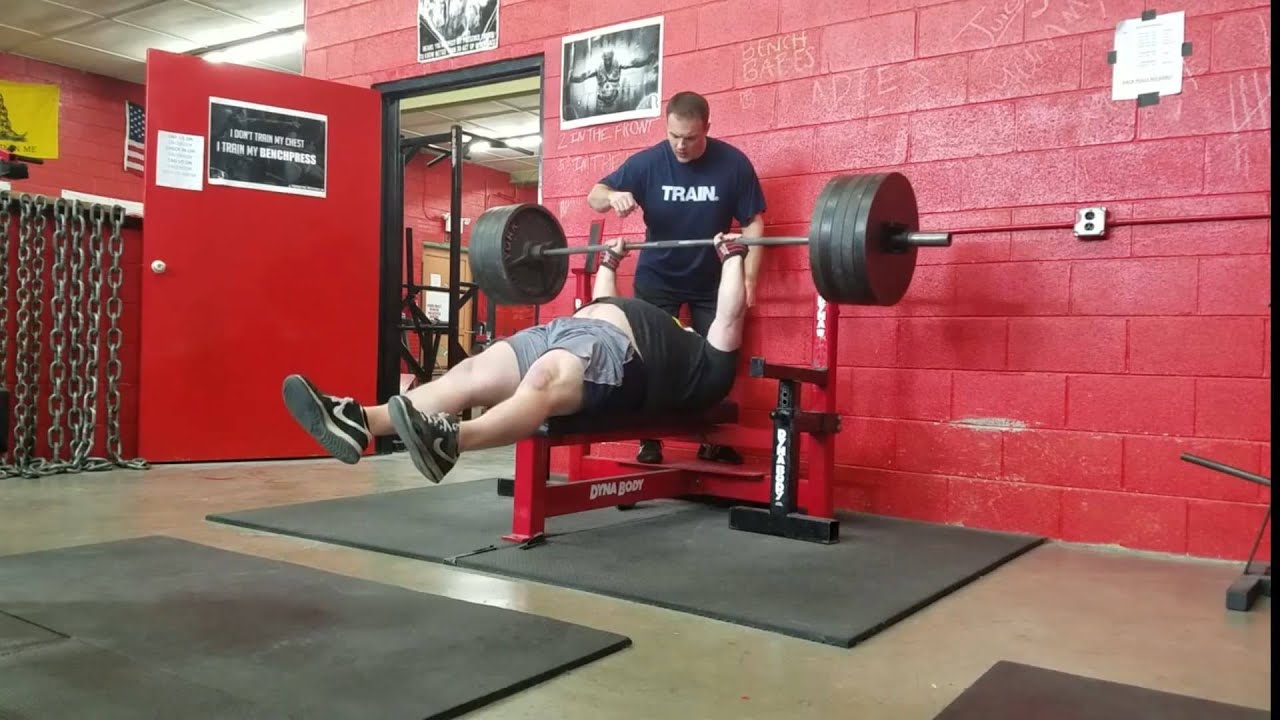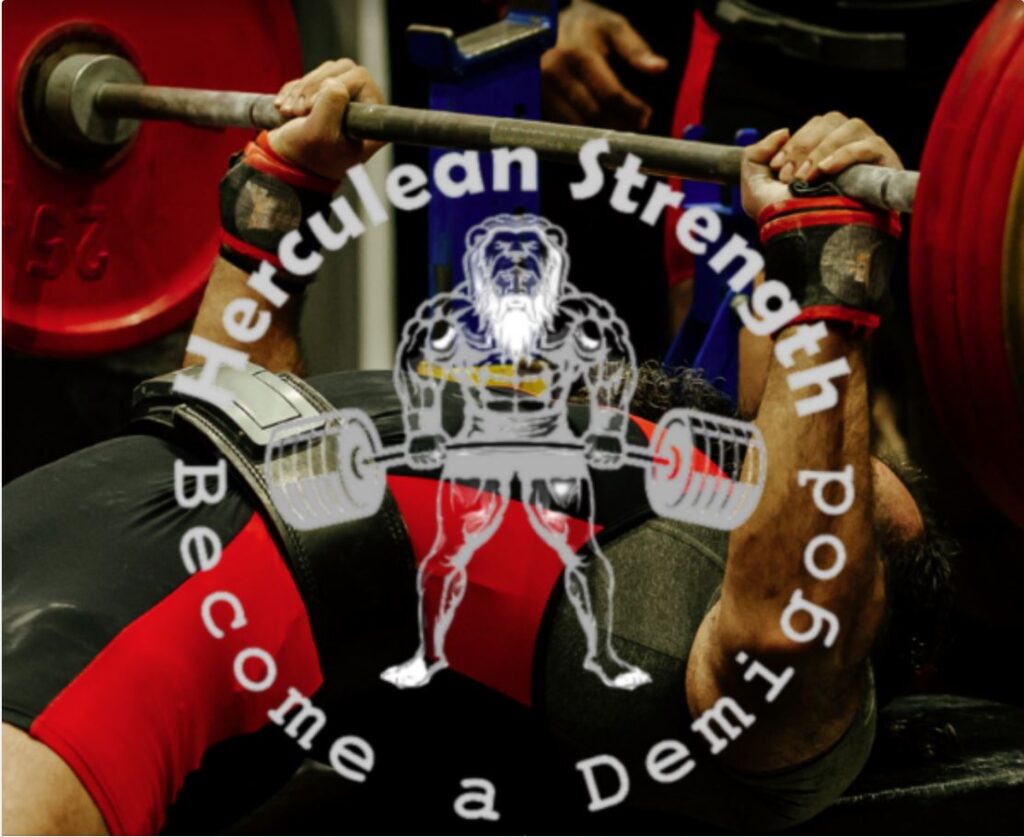The Larsen Press can help increase your bench, upper body stability; improve form; grow your pecs and much more.
Put simply, the Larsen Press is a variation of the Bench Press with a slight twist — to keep your feet straight ahead in the air instead of grounding them into the floor to assist your leg drive.
So basically, this Bench Press variation is one without a leg drive and necessitates a ton of stability in both your upper body and core to prevent your form from breaking down.
Strength athletes, powerlifters, and bodybuilders alike can benefit greatly from implementing this exercise into their training.
Why You Should Do The Larsen Press
How to bench 400 lbs completely drug free!
There are various reasons why you should do the Larsen Press.
If you struggle with stability or have a relatively weak upper body, this movement can help ingrain good form.
One of the benefits of this movement is to deliberately sacrifice tightness — which comes from retracting your scapula onto the bench and solidly planting your feet into the ground to produce a legendary leg drive — with the goal of benching through the instability.
Furthermore, as you will fight against losing tightness of your upper back on the bench, it will teach you how to improve your set up to become more efficient at bench pressing if upper back tightness is one of your weaknesses.
Invariably, losing upper back tightness will result in a weaker press, longer range of motion, suboptimal muscular activation, and increased risk of injury.
This is why you should strictly use the Larsen Press as an accessory movement instead of a primary lift.
We recommend starting off small and with lower rep ranges; between 50-60% of your Bench Press 1 rep max and no more than 5-6 reps per set.
With each successive rep, keeping tightness will become more challenging and we don’t want you to incur any injuries.
Unlike the Floor Press, which also forces the lifter to press the weight without the assistance of the leg drive, the Larsen Press incorporates a full Bench Press range of motion, making it a perfect accessory movement for those who are weak off the chest.
How To Do The Larsen Press

How to do the Larsen Press? Luckily, it’s pretty simple.
- Go to a bench press
- Go under the bench just like you’re about to bench press
- Take your feet up and put them on the bench
- Bench press like normal taking the barbell to your chest, and then pressing it back up
- Repeat for your desired sets and reps.
This exercise is just a variation of the bench press, except your feet are on the bench and not on the floor. The reason behind this is that you use less leg drive, forcing only your upper body to move the weight.
Using this exercise is actually one of the best ways to get a big bench press. Just a heads up though, you should not use the same weight you bench press with. Maybe 50-60% of your bench press one rep max.
Larsen Press Benefits
How to bench 400 lbs completely drug free!
What are the Larsen Press benefits?
This exercise places greater emphasis on the upper body, resulting in increased muscle engagement and development. First and foremost this bench press variation specifically targets key beach muscle groups such as the pectoral muscles, triceps, and deltoids.
Without relying on leg drive lifters heavily rely on these muscles to perform the exercise leading to improved strength and hypertrophy in the upper body. Additionally, this variant of the bench press is an excellent tool for identifying and rectifying imbalances between both sides of the body.
The core is another area that greatly benefits from performing this lift. With lifted legs extra effort is required to stabilize during each lift engaging not only your abs but also your obliques and lower back. The regular bench press can’t target your core as well.
The Larsen Press promotes better lifting technique by removing stability provided by leg drive. You’re forced to pay closer attention to your form. You also need solid control in order to execute this exercise properly. This heightened focus often leads to a better bench press technique overall.
This lift is a great way to overcome plateaus in your training regimen. By incorporating it into your workouts, you expose your body to new stimuli which can shock the muscles and encourage further growth and strength gains.
What muscles do the Larsen Press work?

- Pectorals (Chest): This is the main target of the bench press and any bench press variation exercise. This exercise heavily targets the chest/pecs.
- Triceps: The triceps are heavily worked in this exercise. It is a great workout for developing arm strength and size as well.
- Deltoids (Shoulders): The shoulders are never the primary target of any bench press variation, but like it or not they still get worked. The front deltoids are the most targeted in the Larsen Press.
- Core Muscles: The bench press doesn’t use your core at all. This bench press variation uses your core muscles, making it a better compound exercise. With your feet off the ground, your core is heavily engaged because your body stabilizes itself.
- Latissimus Dorsi (Back): Just like the helms row, this exercise targets the lat muscles. The lats stabilize the body and control the bar during the whole lift.
- Rhomboids and Trapezius: Your traps, for a more bro- science term, are worked because they stabilize your shoulder blades during this exercise.
What is the difference between a Larsen press and a regular press?

When comparing the Larsen Press to a traditional bench press the primary difference lies in body positioning specifically with regard to the lifters’ legs.
In a traditional bench press, you would lay flat on a bench with your feet firmly on the ground. This positioning allows you to utilize your legs to generate power and stabilize your body during the lift, which is commonly known as a leg drive.
The traditional bench press is often recommended for beginners because it enables the use of the entire body for support during the lift.
In contrast, the Larsen Press involves lifting your feet off the ground or resting them on the bench instead of keeping them planted.
This eliminates the contribution of your legs in terms of stability and power, placing greater emphasis on your upper body and core strength.
Due to this altered positioning, this exercise requires enhanced core stability and upper body strength as it removes the advantage provided by leg drive. It is typically considered an advanced variation of the bench press that places increased focus on developing chest, triceps, shoulders, and core muscles.
Ultimately, this bench press variation presents a more challenging variation of the bench press by negating leg use and relying primarily on the upper body and core efforts. This makes it an excellent accessory exercise for people aiming to enhance their upper body and core strength as well as stability.
Is leg drive cheating on bench?
No, leg drive is not cheating on bench press. So long as you’re doing the actual bench press exercise and not a variation that relies on you using only your upper body.
Why does shoulder press feel so good?
The shoulder press feels so good because it is a compound lift that works out a beach muscle in your body. Shoulder pumps feel amazing, and due to the compound nature, you get a testosterone boost when you lift.
How effective is floor press?
Floor press is extremely effective when it comes to building upper body strength and size. It is one of the best bench press variations to exist.













